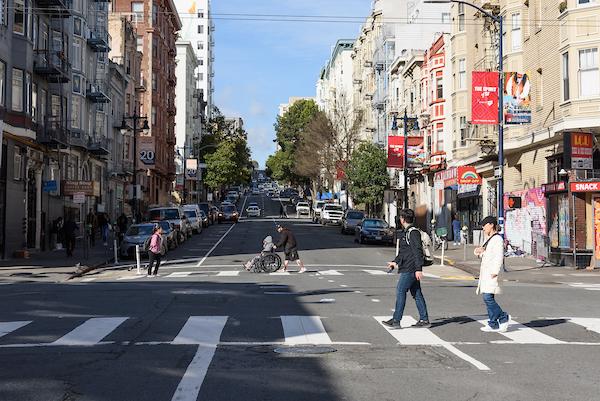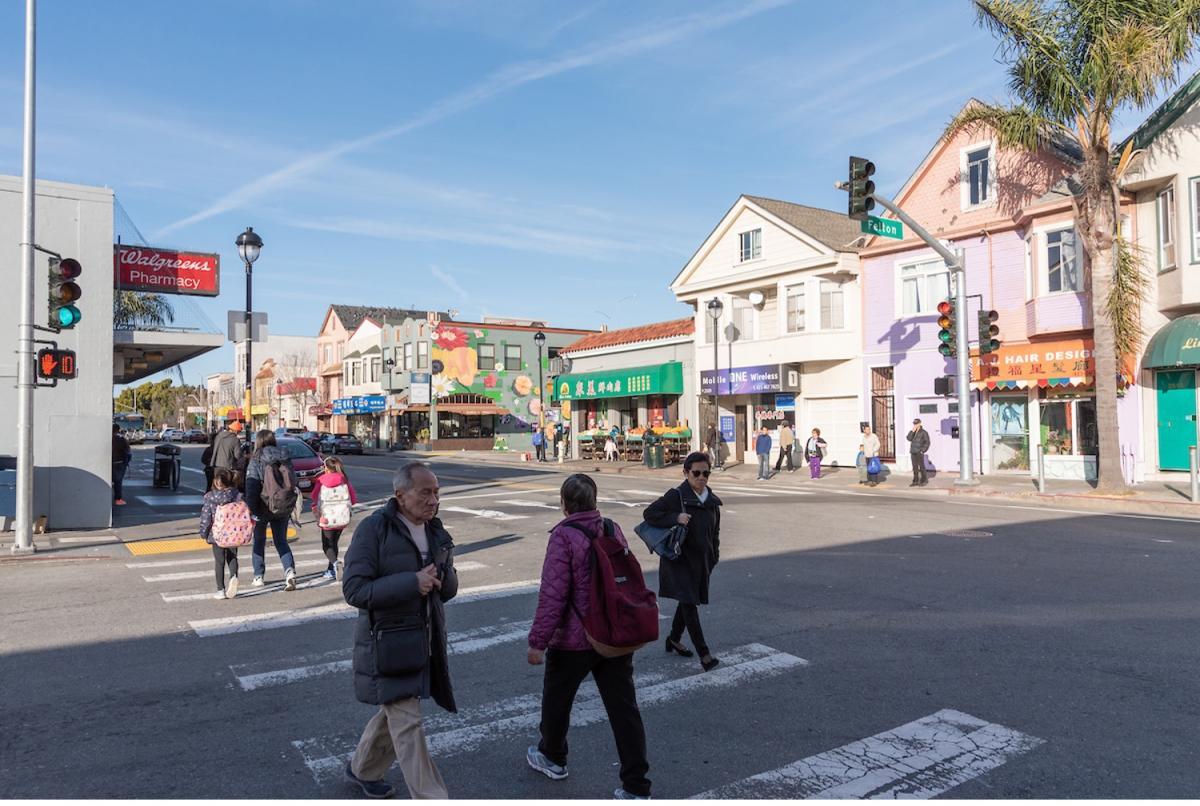
Vision Zero is the city’s policy to end traffic fatalities.
As we work to shape the next phase of Vision Zero, we hope you’ll join the conversation. Since adopting this policy to end traffic fatalities in the city, San Francisco has been a nationwide leader in advancing initiatives to save lives.
However, traffic fatalities persist in San Francisco, and this safety work will continue beyond the first ten years of the program.
We know Vision Zero is the right goal, and we welcome your feedback this summer to help shape the future of the policy.
To get started, please review our What's Next for Vision Zero SF survey to learn about the policy outcomes and priorities we’d like your thoughts on. From there, you can share your ideas with us on the channel you prefer. We’ll share the options below – and what to expect after you provide feedback.
How to share your feedback
There are several ways to share your input this summer:
Online Survey
Take five minutes to fill out this online survey, which closes on Friday, August 30. We hope to hear your thoughts on a range of possibilities, including:
- Top traffic safety challenges
- Policy priorities
- Survey link: What's Next for Vision Zero SF survey - link in English
- This survey is also available in SPANISH. Click here to access the Spanish version.
- Esta encuesta también está disponible en Español. Haga clic aquí para acceder a la versión en Español.
- Esta encuesta también está disponible en Español. Haga clic aquí para acceder a la versión en Español.
- This survey is also available in CHINESE. Click here to access the Chinese version.
- 此民調也有中文版。 點擊此處訪問中文版。
- 此民調也有中文版。 點擊此處訪問中文版。
- This survey is also available in TAGALOG. Click here to access the Tagalog version.
- Ang survey na ito ay makukuha rin sa Tagalog. Mag-click dito upang ma-access ang bersyon ng Tagalog.
- This survey is also available in SPANISH. Click here to access the Spanish version.
SFMTA Board Chair virtual office hours
Meet with the SFMTA Board Chair, Amanda Eaken, and others to share your thoughts.
- Office hours are from 4-5 p.m. on the Monday before Tuesday SFMTA Board of Directors meetings.
- To make sure everyone has a chance to speak, each person will get two minutes to provide comments.
- Join online or call +1 415-523-2709,,385552077# Phone Conference ID: 385 552 077#
SFMTA Board Vision Zero Committee meetings
Join online or in-person to provide feedback. Meeting details and join information will be posted here: Vision Zero Meetings.
- Vision Zero Committee Meeting, August 27, 2024 - 1:00pm
SFMTA Headquarters; 1 S Van Ness Avenue, San Francisco, CA 94103
Union Square Conference Room, Floor 7
Listening Sessions and Outreach Events
Tell the Vision Zero team about your top priorities for the program.
Visit the Vision Zero table at any of these Biking and Rolling Plan Open Houses:
Attend one of our three Listening Sessions:
- Listening Session 1: Tuesday, Aug. 13, 5-7pm, Southeast Community Center, 1550 Evans Ave
- Listening Session 2: Thursday, Aug. 22, 6-8pm, SFMTA, 1 South Van Ness Ave, Corona Heights & Candlestick Conference Rooms, Floor 6
- Listening Session 3: TBD
Connect to one of our two Virtual Office Hours:
- Virtual Office Hour with the SFMTA 1: Thursday, Aug. 15, 6-7pm
Join online (Meeting ID: 246 458 108 45 & Passcode: Ls4G3T) or call +1 415-523-2709,,273395542# (Phone conference ID: 273 395 542#) - Virtual Office Hour with the SFMTA 2: Tuesday, Aug. 20, 12-1pm
Join online (Meeting ID: 211 009 184 171 & Passcode: gvsge5) or call +1 415-523-2709,,735879083# (Phone conference ID: 735 879 083#)
Share your thoughts via email to visionzerosf@sfmta.com. Make the subject of your email “Future Vision Zero Input.”
How we’ll use your input
While the goal of zero traffic fatalities remains the same, how we get there will be based on your feedback as well as on what we’ve learned is most effective.
We'll consolidate your feedback and suggestions from policymakers, peer cities and city officials to develop a set of clear outcomes and priorities on how San Francisco will get to zero.
Before the end of the year, we will share a progress update on what we’ve heard and how it is shaping what’s next for Vision Zero.

Since 2022, we have lowered speed limits on 46 miles of city streets. This includes business districts like San Bruno Avenue, pictured here.
The last ten years: using lessons learned to keep improving our approach
Later this month, we’ll be publishing a report that documents our efforts to get to zero during the past 10 years. We have used lessons learned to continuously evolve our efforts to eliminate traffic deaths and prioritize traffic safety.
We are a national leader in advancing Vision Zero. Since 2014, we have adopted street design and policy changes that would have seemed radical before the policy. These include:
- Removing parking at intersections. This helps people driving see people crossing intersections.
- Changing traffic signals to give people walking a head start. This makes them more visible at crosswalks.
- Designing streets to reduce speeding. This helps prevent a leading cause of deaths and injuries.
- Formalizing our Quick-Build Program. These projects help us move faster to improve safety for people walking and biking.
- Using a High Injury Methodology to focus on the highest-needs areas.
Changes like these have made San Francisco one of the safest larger cities in the country for people walking and biking, according to a League of American Bicyclists report on Biking & Walking Road Safety. It finds that we have the lowest number of bicyclist fatalities per bicycle commuter and second lowest number of pedestrian fatalities per walking commuter.
Learn more and get involved
Visit our Vision Zero signups webpage to learn more about the program and other opportunities to engage.